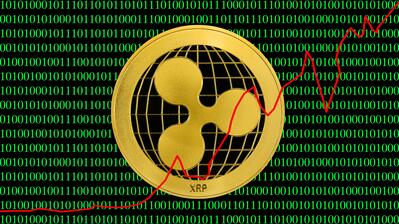COLUMN-Dollar shedding its tariff risk premium: Mike Dolan

By Mike Dolan
LONDON, July 29 (Reuters) - The dollar's surge since the U.S.-European Union trade deal seems a little counterintuitive at first glance, but the rally suggests the greenback may be shedding its elevated trade risk premium - whether Washington wants that or not.
The weekend's U.S.-EU agreement averted a likely protracted trade war by halving threatened U.S. import tariffs on European goods in return for market access and investment commitments. It mirrored a similar deal made with Japan last week, though it covers four times as much U.S. trade.
But, curiously, news of the Japan deal last Tuesday pushed the yen higher, initially at least. There was no such boon for the euro on Monday - as it tumbled over 1% through the day against a resurgent dollar.
Some people pointed to disquiet within Europe about whether the bloc rolled over too easily, only to end up with tariffs some 14 percentage points higher than they were at the start of the year anyway. Others focused on the impact of likely exaggerated European investment and spending pledges.
But something else seemed to be stirring in a broader worldwide dollar rally that went way beyond the euro, a possible unwinding of the risk premium that had been built into the currency since April to account for Washington's seemingly chaotic tariff swipes and possible reactions.
With EU, Japan and UK deals in the bag and intense talks under way with China, Canada and Mexico, Washington has essentially defused tensions surrounding the looming August 1 trade deal deadline.
And the agreements completed now cover a combined 60% of all U.S. trade. The China standoff will likely rumble on but negotiations are under way in Stockholm and standing pacts will likely be extended, with Beijing's hand weakened by trade deals elsewhere.
What's more, the Trump administration appears to have successfully managed all this with a minimum of retaliation and limited economic damage to date. The effective U.S. tariff rate is set to end somewhere between 15% and 20%.
That may be a possible drag on growth at home and abroad, but tariff income is flattering U.S. government revenues at a relatively low cost. Any U.S. consumer inflation fallout coming down the pike will keep the Federal Reserve cautious for longer about interest rate cuts - but that too may be a lift for the dollar if it's more responsive to the rates picture again.
"In terms of domestic political dynamics, Donald Trump is winning the trade war," AXA Group Chief Economist Gilles Moec wrote on Monday.
Assuming this is the beginning of the end of the year's big tariff shock, businesses and markets may finally have some degree of certainty about the months ahead and allow a lot of paused planning and activity to resume - even if at measurably higher costs.
Fading recession risks further on that, the dollar should again start to revert to more normal behavior tracking relative interest rates and economic signals rather than Truth Social posts.
RISK PREMIUM FALLING?
Uncertainty is always hard to quantify, but there are a few ways investors have been capturing it.
A closely followed trade component of the Economic Policy Uncertainty Index series - the Baker-Bloom-Davis model - skyrocketed to unprecedented levels in April. But it has since subsided to its lowest point since January and is less than a quarter of April's peak.
U.S. stocks have clearly bounced back from the April shock, hitting record highs once again, as recession signs have failed to appear and the artificial intelligence theme has charged forward. Treasury yields, however, do remain elevated by the debt-raising fiscal bill and stubborn Fed stance.
But volatility gauges for both equities .VIX and Treasuries .MOVE are back near their respective lows for the year.
And the dollar, the one clear loser all year, is clawing back ground.
Crucially, its recent separation from transatlantic yield trends is slowly being re-established.
After April 2, the 2-year yield gap boomed about 40 basis points wider in favor of U.S. Treasuries and remains more than 20 bp wider since that day. But rather than follow that gap in lockstep as usual, the dollar went the other way and lost over 6% - a critical reflection of a building risk premium amid foreign investor concern, hedging and capital switching.
Selling has petered out in recent weeks, and Monday's 1% dollar index surge was another indication of a more positive bias that could persist with the big yield premium so large.
Whether a recovering dollar is what Trump actually wants is a different question.
The running assumption all year has been that Trump favored a weaker dollar as a way of narrowing U.S. deficits and boosting exports, and Trump addressed the issue on Friday.
"It doesn't sound good, but you make a hell of a lot more money with a weaker dollar - not a weak dollar but a weaker dollar - than you do with a strong dollar," he said.
If the dollar now shows signs of bouncing back sharply, political pressure on the Fed to counter it with much lower interest rates will remain intense.
The opinions expressed here are those of the author, a columnist for Reuters
-- Enjoying this column? Check out Reuters Open Interest (ROI), your essential new source for global financial commentary. Follow ROI on LinkedIn. Plus, sign up for my weekday newsletter, Morning Bid U.S.







